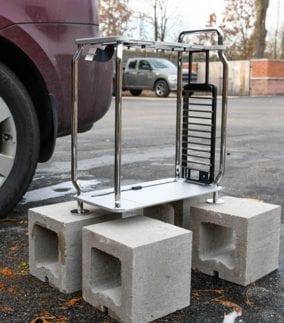
Have you ever wanted to
Just make sure you don’t leave it in the wrong part of town.
Note: If you’re worried that the 8, 12 and 16-core Mac Pros memory limits are too low for you, check out how OWC has confirmed that you can upgrade these machines to 1 TB of memory, saving you up to 65% over factory installed
































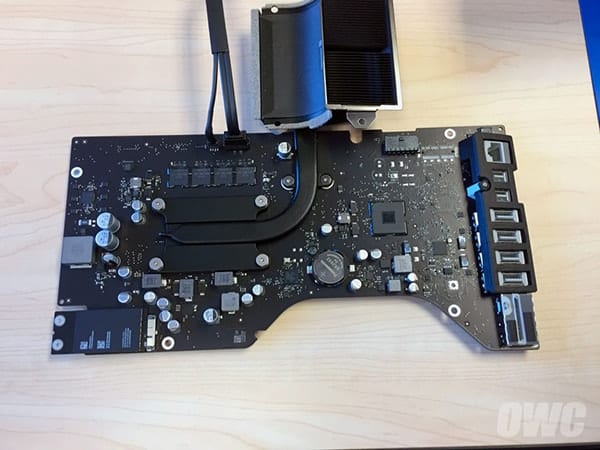
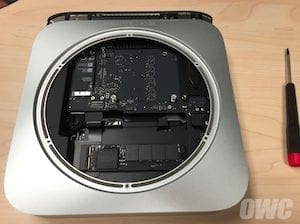



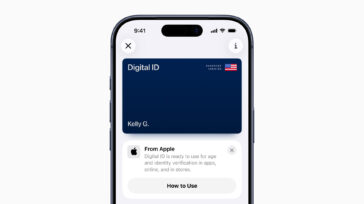
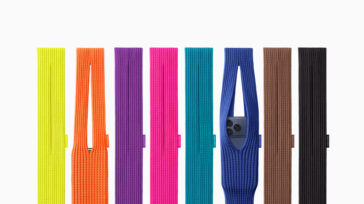


where are the wifi and bluetooth antennas? how do they connect?
do you think there could someday be a way to use external antennas as we can do (with a small modification) on the 5,1 Mac Pros?
Excellent tear-down, more detail than ifixit! Can you tell me what card is used for the WiFi? Is it a WiFi/Bluetooth combo? Broadcom made?
Hey Andrew!
I spoke with Brady, and he opened up the machine to take a look. What he found is that it has an AirPort Extreme (0x14E4, 0x7BF) for the Wi-Fi and a Broadcom 4364B3 chip for Bluetooth (gathered from the system information). As to whether these are on the same card, he doesn’t know.
All of the Wi-Fi antennas lead to the PCB that contains the power button and front two Thunderbolt 3 ports. He could see a chip on it, but it’s all covered up and he couldn’t read the print to see what it was. Getting to a point where we can remove the PCB to get a closer look at the chipset would involve disassembling a significant portion of the MacPro, which is something we can’t do right now due to our current testing schedule on these machines.
He indicated that they may have some breathing room in a few weeks and can possibly bust it open then.
I’m sorry I can’t give you a definitive answer, but I hope this helps a little!
Thanks for the reply, it was a lead but I have come to a dead end and it is really bugging me! What are Apple using in there for WIFI/Bluetooth? WIFI says 802.11ac, Bluetooth says version 5.0, vendor is Broadcom. Broadcom do not make a combo card with these specs. You’ll be my favourite people if you can pop the lid on that thing for me pleeeeese!
Could someone please verify that the extra four power headers on the main board (those intended to power video and other PCIe) are truly proprietary? The Belkin AUX Power cable images on the Apple Store aren’t super clear, but they look like standard eight pin locking connectors to me.
it irks me to pay $67 for $10 worth of everyday cables (notwithstanding most will go unused in a drawer).
Plenty of discussion that the SATA power header is a custom ten pin part (though it only uses eight contacts ( 4 by 4), and you have to buy an incredibly overpriced bracket and super noisy drive in a size you probably don’t want, just to obtain the $5 custom cable for pre-regulated SATA power.
I just spoke with Brady, and he took another look to confirm that the connector is proprietary. He said:
“They are mini 8-pin connectors, just like the mini 6-pin connectors on the MacPro5,1 but in the 8-pin variety. A standard 8-pin connector is way too large to fit.”
He took this picture to give a perspective of the scale difference between the two:
He also said:
“There is also a mini 6-pin header on the board for PCI slots 5-8 that fits a mini 6-pin cable from the previous generation MacPro tower.”
Hope this helps!
Awesome! Thanks for the detailed image! My custom order is still pending, so I can’t just check it myself.
There’s a new mini-8 in the MiniFit Jr Molex lineup — I’m now pretty confident if the long-available mini-6 from the same product line fits, this will do the trick.
Perhaps OWC should make some single cables in a neatly braided fashion to one-up Belkin, and prove that loyal Mac Pro users with deep enough pockets to accept Apple’s eye-watering entry price need not be price-gouged buying more cables than they require.
Cheers, and Thanks!
F
I will definitely mention that to our Product Development team!
Ack. After I zoomed your image, even though then quite blurry, it looks like Apple has keyed 1-3-7; the mini-8 I linked to is keyed 1-4-6-7. You can insert a keyed mail into an keyed female, but not the opposite (without a Dremel). Perhaps I’m misinterpreting blurred pixels in your image, or hopefully another mini-8 from Molex is available. I ordered what is offered, and hope I can make it fit.
[sigh] I’m tired on this gloomy blurry Monday. So when I patiently look closer, it appears the gen 3 version of the Molex mini-8 is indeed keyed properly for the header Apple is using. All should be well. (:
Sorry for all the excess posting.
Happy Monday
No worries – it makes for great conversation! :-)
Whoops! I think I sent the wrong link to the mini-8; here’s the correct one.
hi Frederico
have you pursued this any further?
I was able to purchase some of these mini-connectors off Farnell (Molex Micro-Fit) and it fits perfectly.
I was wondering if anyone has extracted a pinout of these yet :)
Very nice. I’m pretty sure iFixit didn’t go this far. That bare cage is cool looking too. My question here is this: is the CPU’s IHS custom for the Mac Pro, or do all tray models look like that? If it isn’t a custom IHS, that would at least leave open the possibility of future upgrades by the end user.
I do wonder how much latency the PLX multiplexer switch adds. I know previous motherboards on the PC side that used PLX switches to “gain” PCIe lanes introduced unwanted latency, especially if used for GPUs.
I’m actually glad Apple took some design cues from Noctua with the heatsink’s heat pipe and fin array. That looks exactly like something Noctua would make if they made Mac Pro heatsinks.
Good questions ST! :)
We don’t have exact measurement specs so one could be slightly thicker or wider than the other. But besides possible slight measurement differences, the design is identical.